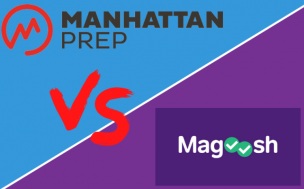Preparing taxes requires the assembly and analysis of content from various sources in order to answer specific questions – just as the GMAT’s Integrated Reasoning section does.
Integrated Reasoning (IR) is still a relatively new addition to the GMAT. Students frequently ask, “Is this section important?” Yes – it is.
Its tasks are designed to reflect the current business world, and the abilities it requires. In addition, the Integrated Reasoning section is scored. That result is forwarded to schools. Even if you earn a high 40 or low 50 on the Quantitative and Verbal portions, a one out of eight on Integrated Reasoning will raise questions.
And if two strong candidates have applications that are extremely similar, your Integrated Reasoning score could make all the difference.
To do well on the Integrated Reasoning portion, you must first understand what it tests. Note the following:
1. You must answer 12 questions in 30 minutes.
In other words, you can devote 2.5 minutes to each problem. While this may seem adequate, many Integrated Reasoning questions contain more than one part. The parts utilize the same data, but they may be unrelated to one another.
Thus, your timing is roughly one minute per part, which means there is no time to waste. You must understand how to approach each problem – if you choose to do so at all. Why might you opt to skip a problem?
2. Each part of a question must be correct in order to receive credit.
If a problem contains three portions, quickly determine whether you can answer each question correctly without squandering your time. You must definitively decide whether or not to answer a question, because the questions must be completed in the order they appear, and you cannot return to a previous problem.
Practicing Integrated Reasoning problems in advance will train you to make the appropriate decision.
3. You are provided with a drop-down calculator.
Expect to see calculations that may be more difficult than those on the Quantitative section of the test. Practicing with this drop-down calculator will increase your comfort level come exam day.
4. There are four types of questions.
Each assesses your ability to employ specific methods and skills:
Graphics Interpretation: This problem involves a graph, as well as questions related to the graph. Answers choices are presented via drop-down boxes embedded within the questions.
Two-Part Analysis: These problems present you with a word problem involving two related answers. You must choose two options from a chart that satisfy the word problem.
Table Analysis: With these questions, you will be asked to interpret data in a large table. You will also be provided with a sort function, so you can manipulate the data and answer the related questions.
Multi-Source Reasoning: You will be presented with multiple pieces of data in various forms such as charts, company emails, and tables. To answer each question you must choose the correct piece of data.
Sample questions are available on the GMAT website – review them! Familiarity with Integrated Reasoning will do much to ease your mind about this section.
While Integrated Reasoning can be an inevitable unpleasantness, it can be learned. And unlike my taxes, your results will not involve paying the government.
Toby Blackwell is a professional GMAT tutor and contributing writer for Varsity Tutors. He graduated with honours and received his Bachelor’s degree from Harvard University. He scored a 770 on the GMAT.
RECAPTHA :
a0
e5
d8
9b







